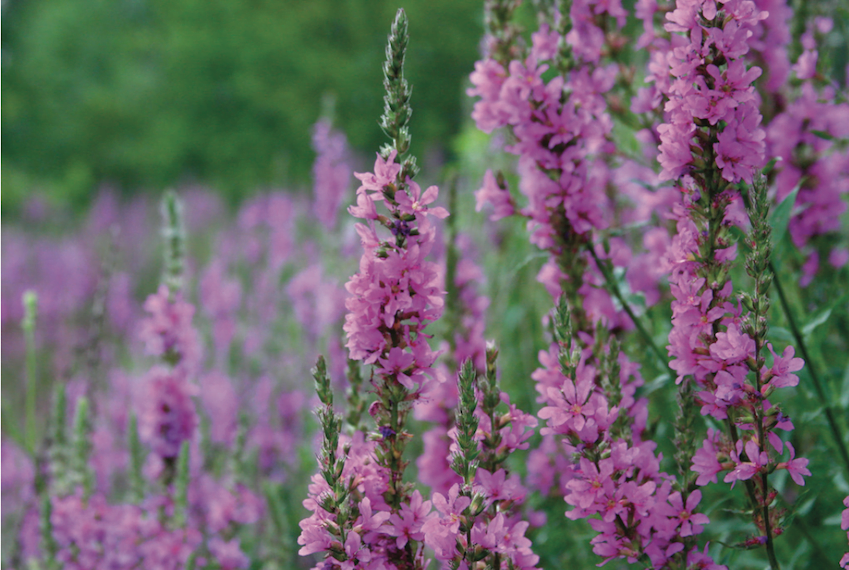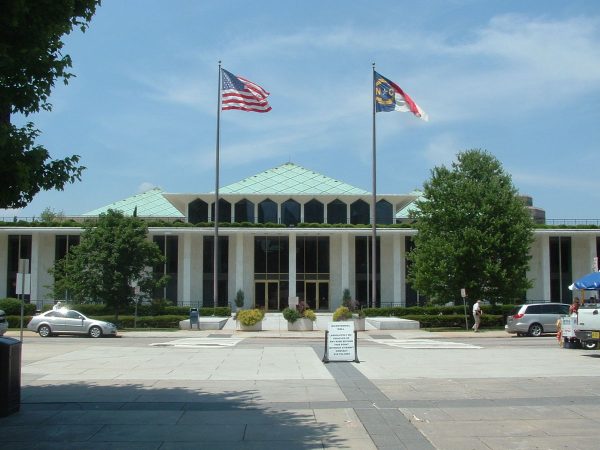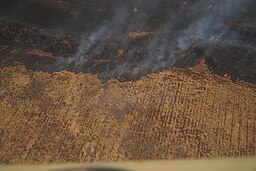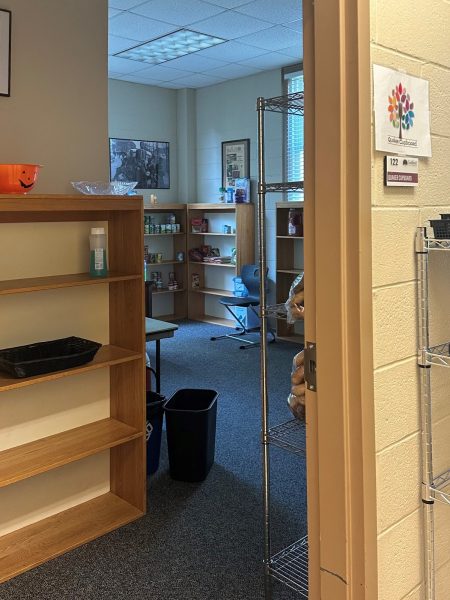Invasive species are a great threat to ecosystems
Purple loosestrife often causes its surrounding habitat, where fish and wildlife feed, to be overtaken by a sea of purple flowers. // Photo courtesy of flickr.com
The purple flowers found by the lakeside, the lush green vines that grow along the bricks of a house and the distinctly brown striped fish by the shore all seem like normal features of nature.
However, they are all dangerous.
The three creatures, the purple-loosestrife, kudzu and lionfish respectively, are considered invasive along with about 4,300 other species in the United States.
“It’s a species that’s coming in and establishing itself where it doesn’t belong, or where it’s non-native,” said Bryan Brendley, associate professor of biology. “They can cause stress or strain on native plants that belong in the area.”
While working in the Animal Plant Health Inspection Service-Plant Protection and Quarantine division of the U.S. Department of Agriculture, Brendley observed the Purple-loosestrife species that had been colonizing Presque Isle, a protected area of land that juts into Lake Erie.
From afar, purple-loosestrife looks completely harmless. It is a flowering plant that blooms during summer months with red or purple tinted petals and is found along lakes, ditches or meadows. But many do not realize its negative effects on the environment.
“We think about loss of native plants and animals,” said Brendley. “Not only outcompeting the native plants’ area, but also if those plants are outcompeted, then anything that feeds on those plants can suffer population crashes. We often don’t realize how important plants are to an ecosystem. They’re the producers of an ecosystem and if you lose a certain animal or herbivore’s food supply, you can really start to have detrimental effects up the food chain.”
Purple-loosestrife, along with the Russian and autumn olive shrubs, the English ivy vine and the multiflora rose plant are significant occurrences of invasive species within North Carolina. The U.S. in general has a massive population of kudzu, climbing vines that are found along roadsides and other disturbed areas.
“(Kudzu) was imported from China as a means of erosion control as old cotton farms and tobacco farms were converted to pastures for livestock,” said Lynn Moseley, a Charles A. Dana professor of biology emerita. “It turns out that there are not natural controls … that could prevent kudzu from spreading broadly and rapidly. It has smothered many thousands and thousands of acres of land in the South and Southeast. It prevents light from reaching the trees and anything in the understory.”
Due to their extremely aggressive nature, the federal government classifies species such as kudzu as “noxious weeds,” and the effects of these species are not limited to the environment.
“Some of these … noxious invasive plants can cause human harm,” said Brendley. “Like the giant hogweed would be one example.”
Giant hogweed causes Photodermatitis, which results in lesions and blisters on the skin. A lack of awareness about invasive species makes humans more vulnerable to these events.
Invasive species have quickly spread in the United States. However, President Bill Clinton issued an executive order that mandated federal action against invasive species in 1999. In addition, the federal government has published several identification guides for these species.
According to Brendley, both federal and state governments work to control invasive species as they threaten the safety of native plants and animals as well as cost billions of dollars to manage each year.
Today’s worsening climate only aids invasive species.
“If the temperature indeed keeps increasing and carbon dioxide levels keep rising, that contributes (to invasive species) as well because the more carbon dioxide, the happier the plants are,” said Brendley. “And they’re going to find a way to colonize more areas.”
It is important to know how to control the growth of these species.
“There are a variety of approaches that people have taken and are taking,” said Moseley. “You can go out and manually pull up invasive species. If you’ve got a ground-covering invasive like a vine, you can lay black plastic down, but you have to cover everything and that’s going to kill the invasive species and anything else that’s trying to survive under the invasive species.”
Although these mechanical controls can be effective, they will not work for all species.
“Another approach is to use herbicides,” said Moseley. “Personally, I think mechanical control is better than herbicides, but there are some places where if you don’t use the chemical approach, you’re going to be defeated simply because the invasive species are very aggressive and they have all sorts of adaptations to survive.”
With their ability to adapt to various habitats and outcompete native species, invasive species are and will continue to be one of the greatest threats to global ecosystems.










Derek Dewitt • Mar 26, 2018 at 8:20 am
I’ve always wondered about the impact of invasive species, so thanks for sharing this. I had no idea that invasive species could cause so much stress on the natural plants and animals of that area. I can see why you’d want to control and get rid of any non-native plants and animals so the ecosystem stays healthy. https://abinvasives.ca/invasive-species/